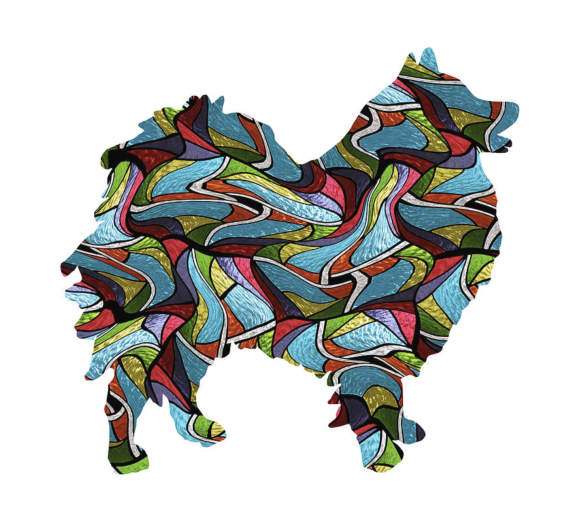
The genesis of the word, “spitz” as it applies to a dog is interesting. In German, it means “pointed,” but the word derives from the Old Dutch which literally translates to “pointed peaks.” This is a reference to the snow-capped mountain peaks of northern European and sub-Arctic regions, and as people tended to refer to dogs of their culture using familiar terms, they referred to dogs with pointed ears and wedge-shaped muzzles by the word, spitz.” Even today, Germans refer to them as “tips” or “peaks.”
There were a lot of dogs with which to work. Up to 70 distinct spitz breeds are thought to exist in the world, and most of them share a wolf or fox-like appearance: Prick or “pointy” ears, almond shaped eyes, a double coat, and a tail carried over the back – traits that help keep them warm in cold weather. At the time of this writing, sixteen of these breeds are AKC recognized, and one of them, the German Spitz, is the progenitor of many other European breeds.
The German Spitz is regarded by most cynologists to be the oldest dog breed in Central Europe. A descendant of the stone age peat dog,“Torfhund,” aka “canis familiaris palustris Ruthimeyer,” the German Spitz is one of several closely related spitz breeds known in Germany since the mid-1400s. In that country, the German Spitz has five varieties, but in some other countries, these varieties are recognized as separate breeds. They are the Wolfsspitz (recognized as Keeshond in the US), the Mittel spitz (medium), Klein spitz (miniature), Zwergspitz (the toy size known as the Pomeranian in the US), and the Giant spitz.
Another interesting aspect of the German Spitz is the fact that being more of a watchdog than a hunter may have saved its life – and the breed. Nobles were possessive of their lands, and the game on it. A hunting dog owned by a farmer was usually killed to protect that game, but nobles did allow peasants to keep German Spitzes because these dogs weren’t interested in game animals like deer.
To this day, the German Spitz is a fine watchdog – affectionate and self-confident (if not occasionally obstinate), but bad guys beware, there is no sneaking up on this breed.
Image: German Spitz stained glass artwork by Gregory Murray is available for purchase as fine art and in home decor and lifestyle items here
